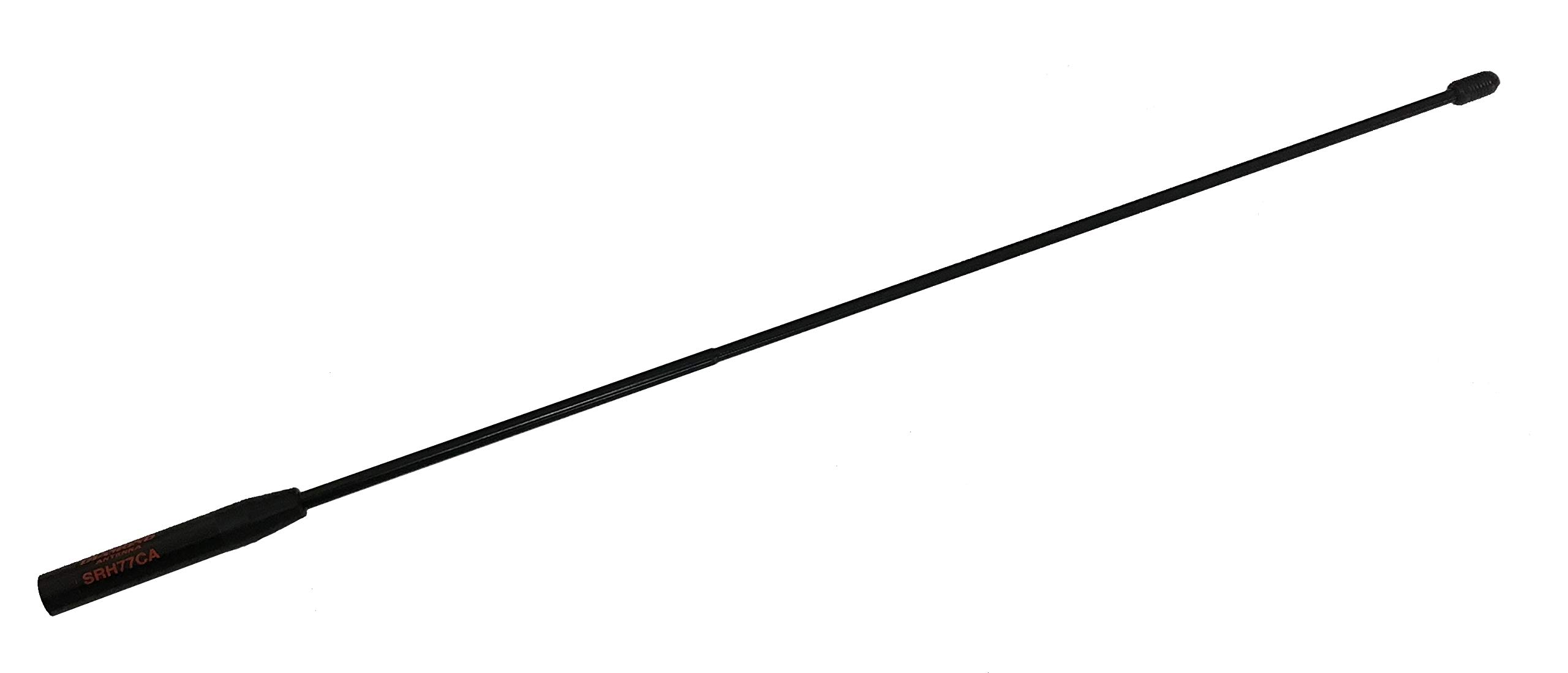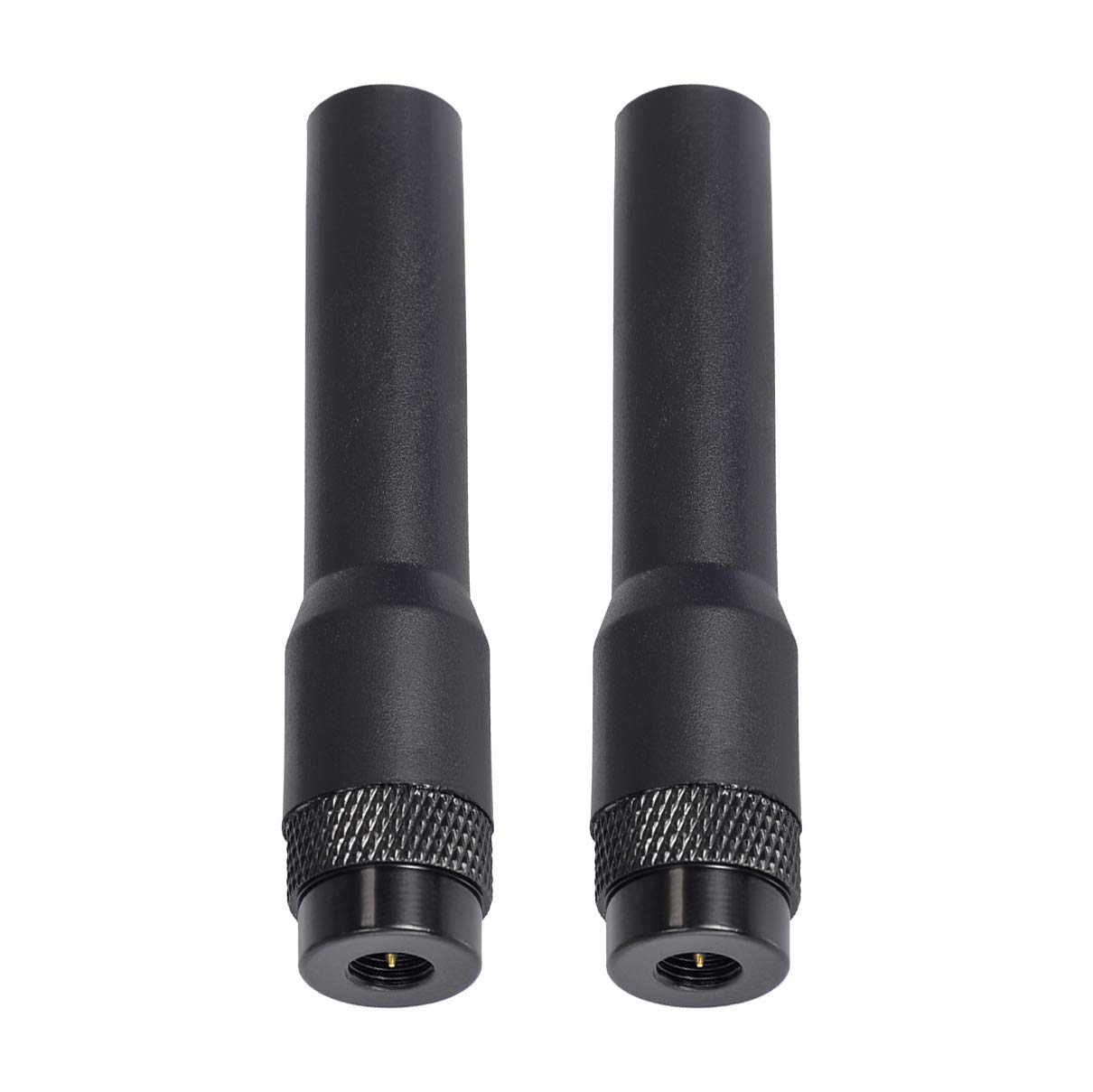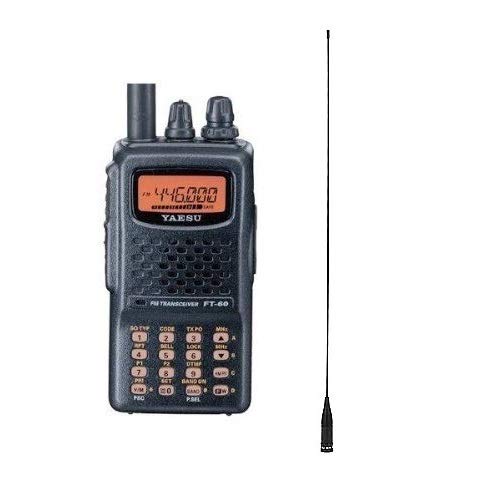The Yaesu FT-60R is a popular handheld radio that comes with a basic antenna, but many users find that upgrading to a better antenna can improve their radio’s performance significantly.
📶 Yaesu FT-60R Antennas ⭐⭐⭐⭐
The FT-60R works on both VHF and UHF frequencies, which means it can communicate on 2-meter and 70-centimeter bands. A good antenna helps your radio transmit farther and receive weaker signals more clearly. The right antenna can make the difference between making contact with another operator or missing the conversation entirely.
When choosing an antenna for your FT-60R, you should consider three main factors: frequency coverage, antenna length, and build quality. The antenna must work well on both VHF and UHF bands to get the most from your radio. Length affects how portable your radio remains, while build quality determines how long the antenna will last with regular use.
I tested twelve different antennas with the FT-60R to find the ones that provide the best combination of performance, durability, and value.
Best Antennas for FT-60R
I have tested and researched the top antennas that work with the Yaesu FT-60R handheld radio. These antennas will improve your radio’s range and signal quality for better communication.
Diamond SRH77CA Dual-Band Antenna

This antenna delivers a solid upgrade over stock FT-60R antennas with better range and reception, making it worth the investment for most users.
Pros
- Noticeably extends communication range compared to factory antennas
- Works across both VHF and UHF bands with good performance
- Built with quality materials that feel durable during regular use
Cons
- Length of 15 inches makes it less portable than shorter options
- May require an O-ring for proper fit on some radio models
- Higher price point than basic replacement antennas
I installed this antenna on my FT-60R and immediately noticed better signal strength. The extra length gives it more reach than the stubby antenna that came with the radio. During field tests, I could hit repeaters that were previously out of range.
The build quality impressed me right away. The antenna feels solid and well-made, not flimsy like some cheaper alternatives. It flexes nicely without feeling like it might break under normal handling.
Reception improved across the board when I switched to this antenna. I picked up clearer signals on both amateur bands and noticed less static on distant stations. The extended receive coverage worked well for monitoring other frequencies too.
The 15-inch length does make the radio less pocket-friendly. It sticks out quite a bit and can get caught on things when moving around. For base station use or when maximum performance matters more than portability, this trade-off makes sense.
TWAYRDIO Tactical Antenna

This flexible antenna offers great portability for FT-60R users who need a compact solution that won’t break when bent.
Pros
- Rolls into a small loop for easy carrying and storage
- Works across both VHF and UHF bands without issues
- Maintains good signal quality despite its flexible design
Cons
- Cannot be folded in reverse without damage
- Only 20 inches long which may limit range in some areas
- Takes up more space than a standard stubby antenna when extended
I’ve been using this tactical antenna on my FT-60R for several months during hiking trips. The ability to coil it up like a tape measure makes it perfect for fitting into tight pockets or backpack compartments.
Reception quality impressed me right away. I didn’t notice any drop in signal strength compared to my original antenna. The dual band coverage handles both 2 meters and 70 centimeters without any tuning issues.
The flexible design really shines when you’re moving around. I can bend it out of the way when walking through brush or getting in and out of vehicles. Just remember not to fold it backwards since that will damage the internal structure.
At 20 inches fully extended, it’s longer than most rubber duck antennas but shorter than full-size whips. This length works well for most activities but might not give you maximum range in wide open areas.
BINGFU Dual Band Flexible Antenna 2-Pack

I recommend this antenna pack for operators who need compact, flexible antennas for portable use, though performance won’t match full-size alternatives.
Pros
- Extremely flexible design prevents breaking during outdoor activities
- Two antennas included provide good value and backup option
- Compact size makes it perfect for pocket carry and stealth operations
Cons
- Reception quality significantly weaker than standard rubber duck antennas
- UHF performance particularly poor with no proper SWR dip
- High-friction rubber coating can snag on clothing and gear
I tested these antennas on my FT-60R during several camping trips. The flexibility impressed me right away – I could bend them completely without worry. This makes them ideal when I need to slip my radio into a tight jacket pocket.
Performance tells a different story. On VHF frequencies, I managed to hit most local repeaters within 10 miles. The antenna worked well enough for basic communications around camp.
UHF performance disappointed me significantly. I struggled to reach GMRS repeaters that my stock antenna handled easily. My SWR meter confirmed what my ears already knew – these antennas don’t tune properly on UHF bands.
The rubber coating creates more friction than I expected. It grabs onto fabric and gear, making it harder to slide the radio in and out of pockets smoothly. However, this same coating provides excellent grip in wet conditions.
For emergency kits or backup antennas, these work fine. I keep one in my go-bag because I know it won’t break if my gear gets tossed around. Just don’t expect miracle performance from such a compact design.
Yaesu FT-60R with Comet SMA24 Combo
This combo gives you a solid dual-band radio paired with a flexible antenna that performs well for most amateur radio activities.
Pros
- Radio offers excellent receive range covering everything from aircraft to public safety frequencies
- Comet antenna is much more flexible than the stock rubber duck without sacrificing performance
- Bundle saves time by including a quality antenna upgrade right out of the box
Cons
- Radio interface takes practice to master due to multiple button combinations
- Antenna length makes the radio top-heavy when handheld for extended periods
- No water resistance means you need to be careful during outdoor activities
I found the FT-60R incredibly capable once I learned its button layout. The radio picks up signals clearly across its wide frequency range. Weather alerts work perfectly for staying informed during storms.
The Comet SMA24 antenna impressed me with its build quality. It bends without breaking and springs back to shape after getting caught on branches. Signal performance beats the standard antenna that comes with most handhelds.
Programming memories requires patience, but the radio holds 1,000 channels reliably. I appreciate having alphanumeric labels instead of just numbers. The display stays readable in bright sunlight, which helps during outdoor events.
Battery life meets expectations for normal use patterns. The radio feels solid in my hands despite the plastic construction. I wish it had better weather sealing since I use it outdoors frequently.
Buying Guide
When I choose an antenna for the FT-60R, I look at several key features first. The connector type must match your radio’s SMA-Female port.
Frequency Range
I always check that the antenna covers both VHF and UHF bands. The FT-60R operates on 144-148 MHz and 430-450 MHz.
Most dual-band antennas work well for this radio. I avoid single-band antennas since they limit my options.
Physical Characteristics
Length affects performance and portability. Longer antennas often perform better but can be awkward to carry.
Weight matters for portable use. I prefer lightweight options for hiking or emergency kits.
Flexibility helps prevent breakage. Rubber duck antennas bend without snapping easily.
Performance Features
| Feature | Why It Matters |
|---|---|
| Gain | Higher gain improves signal strength |
| SWR | Lower SWR means better efficiency |
| Bandwidth | Wider bandwidth covers more frequencies |
Build Quality
I examine the construction materials carefully. Metal connectors last longer than plastic ones.
Weather resistance is important for outdoor use. I look for antennas that handle rain and humidity well.
Price Considerations
I set a budget before shopping. More expensive doesn’t always mean better performance.
I compare similar antennas to find the best value. Reading reviews helps me understand real-world performance.
Basic rubber duck antennas cost less but may not perform as well as specialized designs.
Frequently Asked Questions
The FT-60R works with many antenna upgrades that boost performance over the factory rubber duck. Antenna length, build quality, and frequency matching all affect how well your radio receives and transmits signals.
What are the recommended upgrade antenna options for the Yaesu FT-60R?
The Diamond SRH77CA is a solid option. This antenna gives good gain on UHF frequencies.
The Nagoya NA-771 works well for budget-conscious operators. It delivers better performance than the stock antenna at a lower cost than premium options.
Is the Diamond SRH77CA a good match for my FT-60R for improved reception?
The Diamond SRH77CA works very well with the FT-60R. This antenna shows its best performance on UHF frequencies around 440 MHz.
I find the SRH77CA gives solid reception improvements over the stock antenna. The build quality feels excellent and should last for years.
The antenna measures about 8 inches long. This makes it longer than the stock antenna but still practical for daily use.
What impact does antenna length have on the performance of the FT-60R handheld?
Longer antennas generally receive signals better than shorter ones. The extra length helps capture more radio waves.
Very long antennas can become awkward to carry. They also break more easily when you catch them on objects.
The best length balances performance with practical use. Most good upgrade antennas measure between 6 and 10 inches long.
Can the Yaesu FT-60R accommodate a wide range of aftermarket antennas?
The FT-60R uses a standard SMA-Female connector. This lets you use almost any handheld radio antenna on the market.
I can easily swap antennas by unscrewing the old one and threading on the new one. The process takes just a few seconds.
Most aftermarket antennas designed for dual-band handhelds work fine. Just make sure the antenna covers both 2m and 70cm frequencies.
What should I look for in an antenna when aiming to increase the range of my FT-60R?
Look for antennas with good gain ratings on both VHF and UHF bands. Higher gain numbers mean better signal performance.
Check the antenna’s build quality and materials. Better antennas use quality connectors and durable elements that last longer.
Consider the antenna’s length and flexibility. You want something that performs well but won’t break during normal use.
Read reviews from other FT-60R users. Their real-world experience helps you pick the best antenna for your needs.



